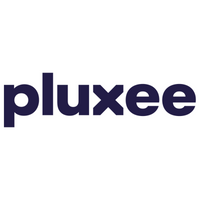How benefits can provide more financial wellbeing than cash
Last year, many UK companies generously gave employees one-off cost-of-living payments to help with rising bills and soaring inflation.
However, this year it’s businesses that have seen a sharp rise in their costs.
We’re now in August. It’s taken nearly eight months for the Consumer Prices Index, which rose by 7.9% in the 12 months to June 2023, to come down. Yet, despite the month-on-month fall, inflation remains high.
When the rising cost of doing business is coupled with consumers cutting back on non-essentials to pay their bills, it’s understandable that many organisations’ profit margins are lower than last year.
Still, the blame isn’t entirely on the cost-of-living crisis, since 68% of firms said climbing labour costs were the dominant pressure on finances. According to Sodexo Engage’s Building a Sustainable and Cost-Effective People Strategy report, 72% of employers had to offer a higher salary than anticipated to secure talent.
This is another blow to businesses’ bottom line and another reason for employers to build a strong Employee Value Proposition, which, among other elements, comprises salary-stretching employee benefits that support employees’ financial wellbeing.
A sustainable alternative
Let’s say, for example, in 2022, a business of 250 employees gave them all a £500 one-off cost-of-living bonus. That’s an increased PAYE bill of £125,000 plus tax. Considering the financial pressure on businesses in 2023, offering a one-off, taxable payment may be unfeasible.
The other factor to consider is the impact on employees. This payment, issued in one go, will have no doubt provided support, but the longevity of that support is debatable. It could have covered some bills or helped with the extra expense of Christmas, but once spent the support ends.
This is why financial wellbeing employee benefits are a sustainable alternative for businesses and a way of providing long-term support for employees.
Doing more with less
An employee benefits platform, which allows employees access to savings on their everyday essentials, would cost significantly less. Businesses that issued a one-off cost-of-living payment of £500 per employee in 2022 would spend over 90% less per employee by embedding an employee benefits platform into their business.
When you put the power to save in the hands of your people, the opportunities are endless. Whether they’re purchasing their weekly shop or a luxury item, with the extensive list of retailers on their employee benefits platform, your employees could save money every time they spend.
Let’s take the weekly grocery shop as an example. The average price of a weekly shop for a family of four is currently £129. Employees could purchase a supermarket retailer voucher, discounted by 6.5% (as an example) via their benefits platform, meaning a £129 voucher only costs £120.62. That saves £8.38 off their weekly shop, and if they adopt this process every week of the year, it amounts to £435.76.
This is just one area where employees can save.
Suppose employees also use the platform for buying birthday gifts, school uniforms, holidays, and day trips. In that case, they’re opening themselves up to a host of savings, surpassing the value of the £500 one-off payment they received in 2022 for a fraction of the cost to the business.
It’s possible to do more with less, and searching for cost-effective solutions that provide long-term and sustainable financial wellbeing support is essential for future-proofing your business and giving employees a better deal.
Supplied by REBA Associate Member, Pluxee UK
Pluxee UK, is a leading employee benefits and engagement partner that opens up a world of opportunities to help people enjoy more of what really matters in their lives.







